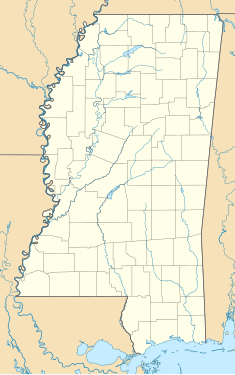| Prospect Hill Plantation | |
|---|---|
| Location | near Lorman, Mississippi |
| Coordinates | 31°50′18″N 90°56′59″W / 31.838261°N 90.949590°W |
| Built | c. 1808; rebuilt 1854 |
| Built for | Isaac Ross |
| Architectural style(s) | Greek revival |
| Governing body | Archeological Conservancy |
The Prospect Hill Plantation was a former 5,000-acre plantation in Jefferson County, Mississippi. In the early 19th century, the plantation was owned by planter Isaac Ross of South Carolina, who enslaved African American people to farm cotton as a cash crop. In 1830, Ross and other major planters co-founded the Mississippi chapter of the American Colonization Society, which sought to move enslaved people to Mississippi-in-Africa, a colony on the coast of what became Liberia.
In 1836, Ross died, and his will freed those enslaved people who agreed to move to Mississippi-in-Africa, and provided for sale of his plantation to fund their move. His will was contested and litigated by a grandson and heir who occupied the plantation while the court case and appeals were litigated. The will was finally upheld by the Mississippi Supreme Court in 1845. That year, the mansion had burned down and a girl died in the fire. About a dozen enslaved people suspected as responsible were lynched. The plantation was finally sold, and about 300 enslaved people were freed and transported by 1848 to Mississippi-in-Africa. They and their descendants were among the Americo-Liberian elite that held power into the late 20th century.
In the 1850s, Ross' grandson Isaac Ross Wade reacquired the Prospect Hill property, building a second plantation great house in 1854. Wade and Ross family descendants occupied the house until 1956, and it was occupied by others until 1968.
This mansion still stands today. In 2011 the plantation and house were acquired by the Archeological Conservancy for preservation of the total property. It is expected to yield artifacts that will contribute to the story of slavery in the United States, as well as to African-American culture and the diaspora.
